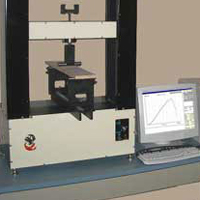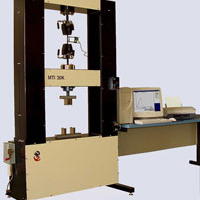Demystifying the World of Materials: The Impact of Compression Testing Machines
In the realm of materials testing, where precision and reliability are paramount, compression testing machines emerge as unsung heroes. These sophisticated devices play a pivotal role in assessing the compressive strength and characteristics of various materials, providing invaluable insights for industries ranging from construction to manufacturing. This blog delves into the world of compression testing machines, exploring their significance, functionalities, and the impact they have on ensuring the integrity of materials.
Understanding
Compression Testing:
The Core
Principle:
At its
essence, compression testing involves subjecting a material to a controlled
force applied in a direction perpendicular to its surface. This force, often
delivered by a hydraulic or electromechanical system, allows researchers and
engineers to measure how well a material withstands compressive stress.
Importance
in Material Evaluation:
The ability
to withstand compression is a critical property for materials used in
construction, automotive components, and a myriad of other applications.
Concrete, metals, plastics, and rubber—all undergo compression testing to
determine their suitability for specific uses.
Components
and Operation of Compression Testing Machines:
Hydraulic
Systems:
Many modern
compression testing machines utilize
hydraulic systems to apply a controlled force. These systems provide a smooth
and consistent application of pressure, ensuring accurate and repeatable
results. The hydraulic cylinders are a fundamental component, converting fluid
power into the mechanical force needed for compression testing.
Load Cells
and Sensors:
Precision
is key in materials testing, and load cells play a crucial role in measuring
the applied force accurately. These devices, often integrated into compression
testing machines, convert mechanical force into electrical signals, providing
real-time data on the material's behavior under compression.
Control and
Data Acquisition Systems:
State-of-the-art
compression testing machines come equipped with advanced control and data
acquisition systems. These systems allow operators to set testing parameters,
monitor the testing process, and collect data for analysis. The integration of
technology enhances the efficiency and reliability of compression testing.
Applications
of Compression Testing:
Advancements
in Compression Testing:
Digitalization
and Automation:
Recent
advancements have seen a shift toward digitalization and automation in compression testing machines. Automated
systems streamline the testing process, reducing human error and increasing
efficiency. Digital interfaces offer user-friendly controls and real-time data
visualization.
Integration
of AI and Machine Learning:
The
integration of artificial intelligence (AI) and machine learning is
transforming the landscape of materials testing. These technologies can analyze
vast amounts of data generated during compression testing, providing deeper
insights into material behavior and contributing to predictive modeling.
Challenges
and Considerations:
Sample Preparation:
One
challenge in compression testing lies in ensuring accurate and representative
sample preparation. The way a sample is prepared can significantly impact the
test results, emphasizing the importance of standardized procedures.
Conclusion:
In the
intricate dance of materials testing, compression
testing machines take center stage. Their ability to unravel the
compressive strength of diverse materials contributes to safety, reliability,
and innovation across industries. As technology continues to advance, these
machines evolve, offering more precise, efficient, and automated solutions.





Comments
Post a Comment